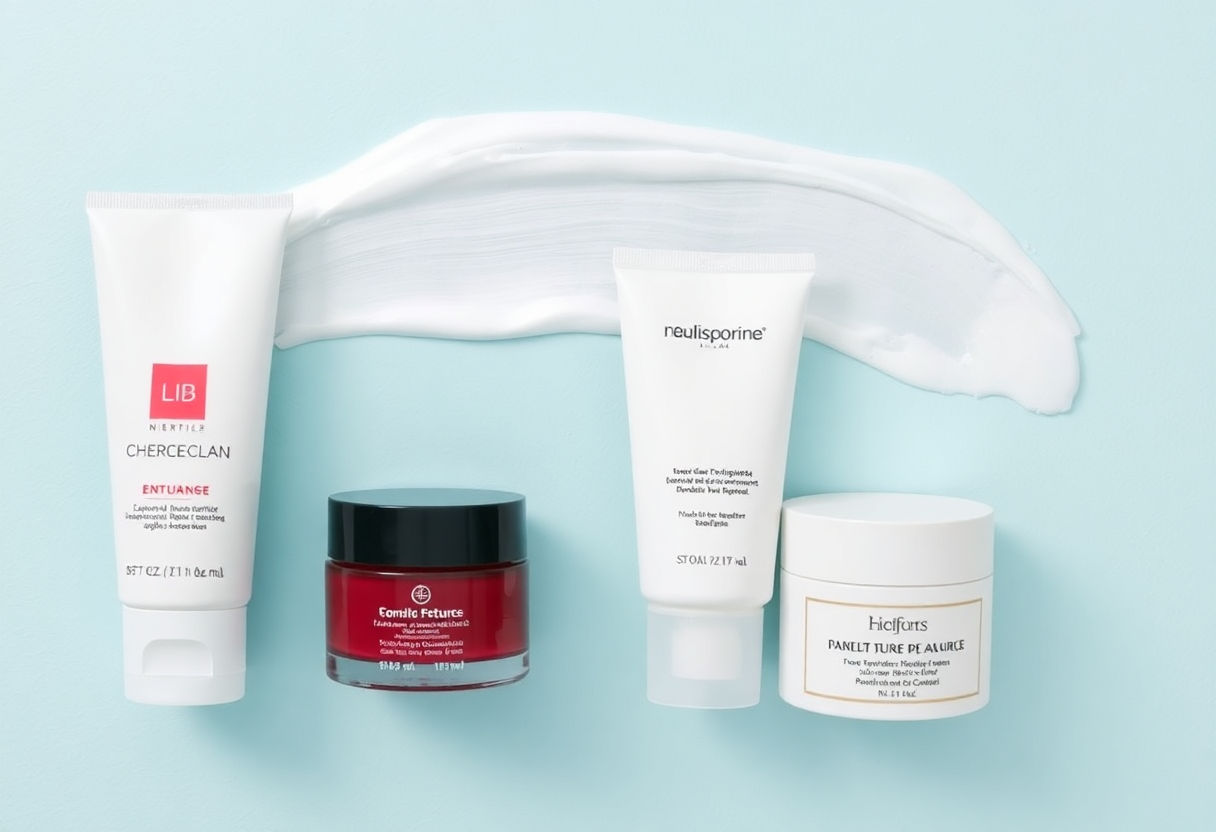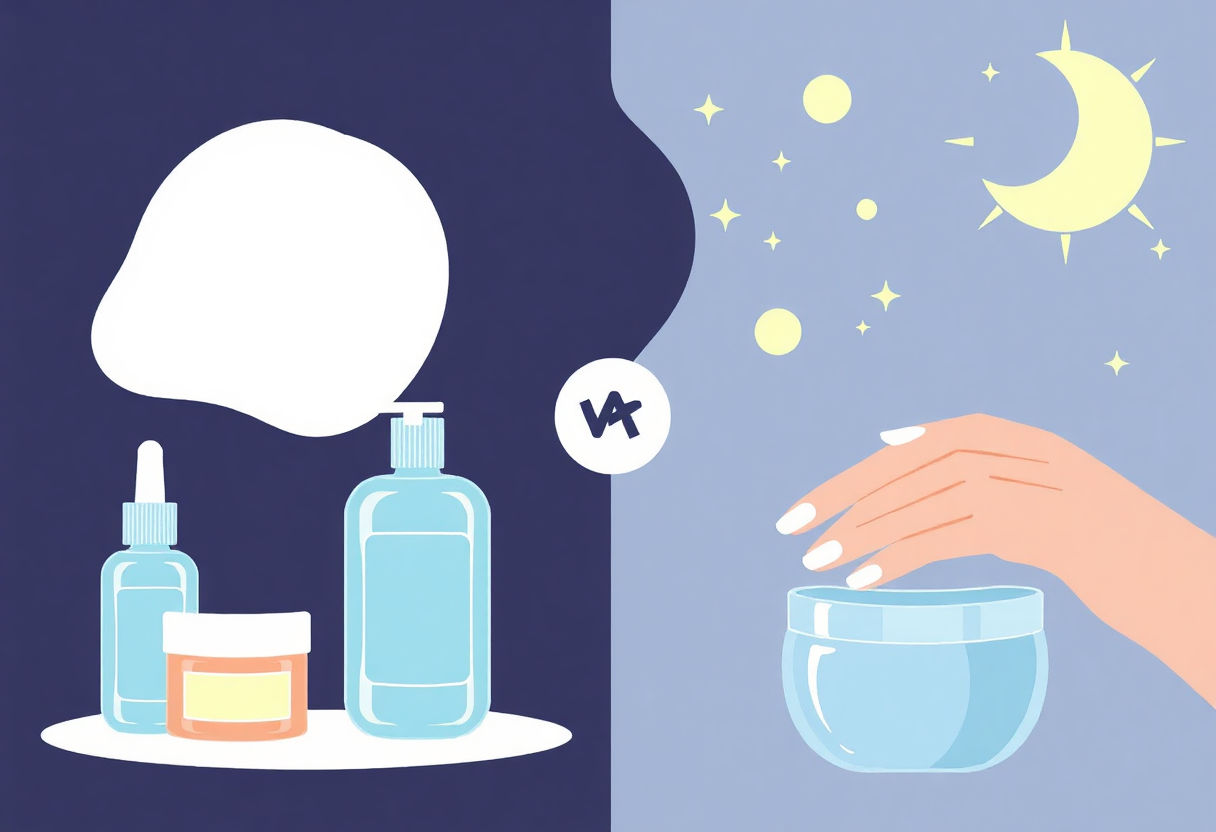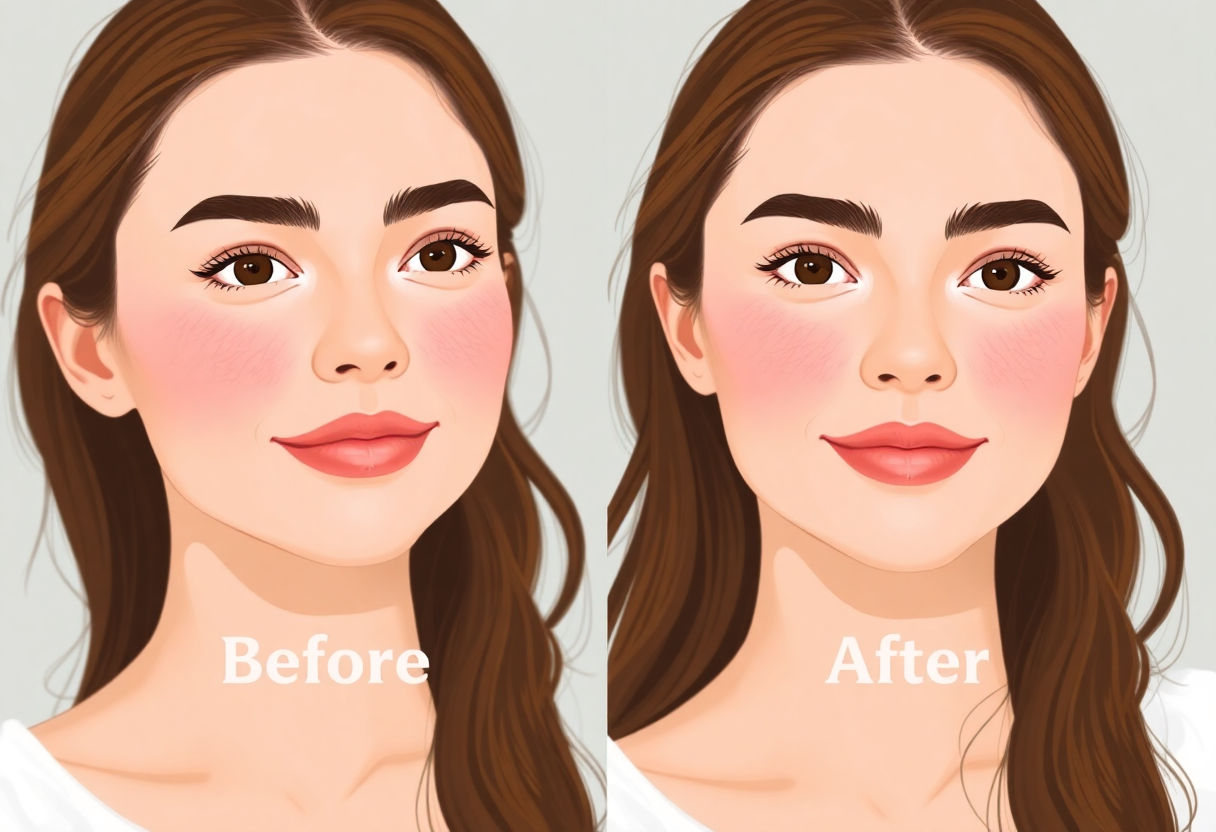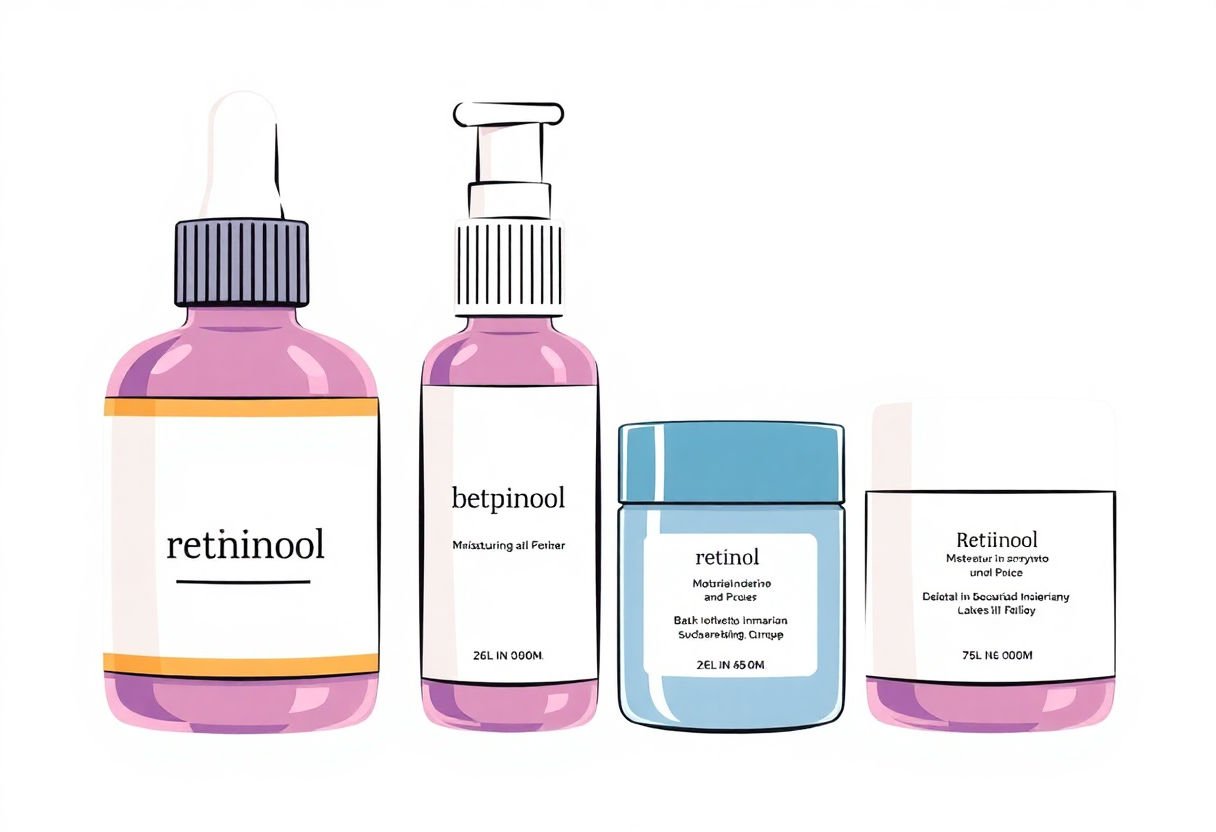Using a moisturizer with retinol in the correct order is essential for maintaining optimal skin health. Retinol, a potent ingredient renowned for its anti-aging properties, can cause irritation if not used properly. Balancing this with an effective moisturizer can enhance its benefits while minimizing adverse effects. This article delves into understanding the role of retinol, the significance of moisturizing, and common mistakes in their application. Discover a recommended skincare routine, expert tips for sensitive skin, and how to adjust for day and night use. Follow the guidance provided to achieve radiant and rejuvenated skin.
Key Takeaways
- Understanding the proper sequence of applying retinol and moisturizer can significantly enhance the efficacy of your skincare routine.
- Retinol, a powerful anti-aging ingredient, should be applied before the moisturizer to allow it to effectively penetrate the skin.
- Moisturizing after retinol application helps to minimize potential irritation and maintain hydration levels in the skin.
- Avoiding common mistakes, such as applying too much retinol, can prevent skin sensitivity and enhance results.
- Adjusting the skincare routine for sensitive skin types or time of day ensures that both products deliver optimal benefits.
Understanding Retinol
 Retinol, a derivative of vitamin A, has emerged as a cornerstone ingredient in the skincare industry, renowned for its remarkable ability to enhance skin appearance. Retinol’s primary function is to stimulate cell turnover, which means it encourages the shedding of old, dull skin cells and promotes the growth of new, healthy ones. This process helps to reduce the appearance of fine lines and wrinkles, thereby contributing to a more youthful and vibrant skin texture.
Retinol, a derivative of vitamin A, has emerged as a cornerstone ingredient in the skincare industry, renowned for its remarkable ability to enhance skin appearance. Retinol’s primary function is to stimulate cell turnover, which means it encourages the shedding of old, dull skin cells and promotes the growth of new, healthy ones. This process helps to reduce the appearance of fine lines and wrinkles, thereby contributing to a more youthful and vibrant skin texture.
Moreover, retinol is instrumental in overcoming pigmentation issues. By accelerating the skin’s natural exfoliation, it aids in fading age spots and evening out skin tone. Another significant benefit of retinol is its role in managing acne. It helps unclog pores, thereby reducing breakouts and minimizing the likelihood of scarring.
However, while the benefits of retinol are extensive, it’s crucial to understand its powerful nature. Beginners should approach retinol use with caution, starting with products containing lower concentrations and gradually increasing usage frequency. It is important to note that retinol can cause skin irritation, particularly in individuals with sensitive skin. Symptoms may include redness, dryness, and peeling, especially during initial use.
To mitigate these effects, it is advisable to combine retinol with a robust moisturizing routine. Moisturizers provide a supportive barrier that can alleviate potential dryness and enhance the skin’s tolerance to retinol. This combination not only amplifies the benefits of retinol but also ensures that the skin remains hydrated and protected throughout the transformative process.
Benefits of Moisturizing
 Moisturizing plays a pivotal role in maintaining healthy, resilient skin, especially when incorporated into a routine featuring retinol. Hydration is one of the most significant benefits of moisturizing. By replenishing moisture, a quality moisturizer helps to improve skin texture and appearance, resulting in a smoother and more supple complexion. It acts as a barrier that prevents water loss, locking in hydration and keeping skin soft and elastic.
Moisturizing plays a pivotal role in maintaining healthy, resilient skin, especially when incorporated into a routine featuring retinol. Hydration is one of the most significant benefits of moisturizing. By replenishing moisture, a quality moisturizer helps to improve skin texture and appearance, resulting in a smoother and more supple complexion. It acts as a barrier that prevents water loss, locking in hydration and keeping skin soft and elastic.
Soothing irritations is another crucial advantage of moisturizing. Retinol, while highly effective, can sometimes cause dryness or irritation as it accelerates cell turnover. A moisturizer can mitigate these side effects by calming the skin and reducing inflammation. It serves as a cushion for the skin, creating a balance that allows retinol to work effectively without causing undue discomfort.
Moisturizing also supports the skin’s protective barrier. Daily exposure to environmental stressors, like pollution and UV rays, can compromise the skin barrier. By reinforcing this barrier, moisturizers help shield the skin from external factors that may trigger premature aging or damage.
Additionally, the application of moisturizer enhances the efficacy of retinol. When retinol is paired with a moisturizer, its benefits are maximized as it can penetrate more deeply into well-hydrated skin. This synergy not only enhances the treatment of fine lines and wrinkles but also promotes a radiant, youthful glow.
In conclusion, consistent moisturizing is indispensable in a skincare regimen that includes retinol, providing hydration, soothing irritations, and fortifying the skin barrier, all while enhancing the overall efficacy of retinol.
Common Mistakes to Avoid
 Avoiding common mistakes when using retinol and moisturizer can significantly enhance the effectiveness of your skincare routine. One prevalent error is applying retinol on damp skin. Many people mistakenly think this increases absorption, but it can actually lead to irritation. Instead, ensure your skin is completely dry before application.
Avoiding common mistakes when using retinol and moisturizer can significantly enhance the effectiveness of your skincare routine. One prevalent error is applying retinol on damp skin. Many people mistakenly think this increases absorption, but it can actually lead to irritation. Instead, ensure your skin is completely dry before application.
Another frequent mistake is using too much retinol. A pea-sized amount is often sufficient for the entire face. Over-application not only wastes product but can also cause undue irritation or dryness. Similarly, skipping the moisturizer can be damaging, as retinol tends to dry out the skin. Moisturizing after applying retinol helps to maintain hydration and soothe the skin.
Neglecting sun protection is a critical error. Retinol can make your skin more sensitive to sunlight. Always apply a broad-spectrum sunscreen during the day to protect your skin from UV damage.
It’s also important to avoid mixing retinol with incompatible active ingredients like benzoyl peroxide or salicylic acid, which can exacerbate skin irritation. If other active ingredients are part of your routine, consider using them at different times of the day or on alternate nights.
Finally, jumping into a daily retinol routine too quickly can overwhelm sensitive skin. It’s advisable to gradually introduce retinol, starting with applications once or twice a week and slowly increasing frequency as your skin builds tolerance. By understanding these pitfalls and taking actions to prevent them, you can optimize the benefits of retinol and moisturizer in your skincare regimen.
Recommended Skincare Routine
A comprehensive skincare regimen incorporating retinol and moisturizer can enhance the skin’s health and appearance significantly. Follow these steps for optimal results:
-
Cleanse: Begin by gently cleansing your face to eliminate dirt, oil, and impurities. This ensures your skin absorbs the subsequent products more effectively.
-
Tone (Optional): If your skin responds well, apply a toner suited for your skin type to balance its pH levels.
-
Retinol Application: Apply a pea-sized amount of retinol to dry skin. This powerful ingredient helps in reducing signs of aging, promoting cell turnover, and enhancing collagen production. Start by using it twice a week, gradually increasing as your skin adjusts.
-
Moisturize: Immediately after retinol application, use a suitable moisturizer to lock in hydration and mitigate any potential irritation from retinol. This step is crucial as it forms a protective barrier and supports skin repair.
-
Eye Cream: Use an eye cream formulated to cater to the delicate skin around the eyes. This can help prevent dryness and fine lines in that area.
-
Sunscreen (Daytime): Finally, if this routine is part of your morning regimen, apply a broad-spectrum sunscreen with at least SPF 30. Retinol makes skin more susceptible to sunlight, increasing the need for sun protection.
Dermatologists emphasize the need to adjust product quantity and frequency based on individual skin types and responses. By adhering to this routine, you ensure a balanced approach to incorporating retinol into your skincare without compromising on hydration.
Expert Tips for Sensitive Skin
For individuals with sensitive skin, following a gentle yet effective approach when incorporating retinol into their skincare routine is crucial. Retinol, while beneficial, can sometimes provoke irritation, especially in those prone to redness or dryness.
-
Start Slowly: Begin with a lower concentration of retinol, applying it once a week. Gradually increase the frequency as your skin builds tolerance. This cautious introduction helps mitigate adverse reactions.
-
Buffering Techniques: To lessen the potential irritants, buffer retinol by applying your moisturizer first. This creates a protective layer that minimizes contact between the skin and retinol, reducing its potency slightly but maintaining its benefits.
-
Hydration is Key: Opt for a moisturizer formulated specifically for sensitive skin, ensuring it is free from fragrances and potential allergens. Look for products containing calming ingredients like chamomile or aloe vera to soothe the skin.
-
Patch Test: Before full application, perform a patch test with retinol. Apply a small amount on a discreet area to monitor any reactions over 24 to 48 hours. This simple precaution can prevent widespread irritation.
-
Avoid Harsh Products: When using retinol, steer clear of harsh exfoliants or products containing alcohol or sulfates that can increase sensitivity and dryness.
According to dermatologists, “It’s essential for sensitive skin types to listen to their skin and adjust the routine accordingly.” Monitoring and adapting based on your skin’s response will lead to a more comfortable and effective skincare experience. Embrace continuous hydration and protection against sun exposure for optimal results.
Product Recommendations
To achieve optimal results while using retinol and moisturizer in your skincare routine, selecting the right products is essential. Here are expert-approved recommendations for both retinol and moisturizers that can enhance your skincare routine significantly.
Retinol Product Recommendations
-
Versatile Retinol Serums: Consider using retinol serums that offer various concentrations to allow gradual skin acclimation. Products with added soothing agents like hyaluronic acid are beneficial for minimizing potential irritation.
-
Gentle Formulations: For those with sensitive skin, opt for products with a lower concentration of retinol. Formulas including ingredients such as niacinamide can provide calming effects while enhancing retinol efficacy.
-
Time-Release Technology: Select retinol creams with time-release formulations, which deliver active ingredients gradually, reducing the likelihood of irritation and maximizing skin nourishment.
Moisturizer Product Recommendations
-
Barrier-Reinforcing Moisturizers: Look for moisturizers that include ceramides or peptides. These ingredients support the skin barrier, a crucial component when using retinol, and help prevent transepidermal water loss.
-
Hydrating Formulas: Moisturizers enriched with humectants like glycerin or urea can draw moisture into the skin, essential for maintaining hydration levels when using retinol.
-
Non-Comedogenic Options: Ensure your moisturizer is lightweight and non-comedogenic to avoid clogging pores, thereby preventing breakouts that can sometimes accompany retinol use.
Selecting the appropriate retinol and moisturizer is a pivotal step in crafting a skincare routine that combines effectiveness with comfort. By investing in these carefully chosen products, users can reap the full benefits of retinol while maintaining a healthy, hydrated complexion.
Adjusting for Day and Night
 To achieve optimal skin health, it is crucial to adjust your skincare routine based on the time of day due to the differing needs of your skin during the day and night. Integrating retinol and moisturizer effectively into both your morning and evening rituals can significantly enhance their benefits.
To achieve optimal skin health, it is crucial to adjust your skincare routine based on the time of day due to the differing needs of your skin during the day and night. Integrating retinol and moisturizer effectively into both your morning and evening rituals can significantly enhance their benefits.
Morning Routine Adjustments
In the morning, focus on preparing your skin to face environmental stressors such as UV rays and pollution. While retinol is generally recommended for nighttime use due to its photosensitive nature, if your routine involves a morning application, it is imperative to apply a broad-spectrum sunscreen. This not only protects your skin from the sun’s harmful effects but also prevents retinol degradation. Additionally, incorporate a lightweight moisturizer post-retinol application to keep your skin hydrated and act as a barrier against external elements. Hydrating serums or creams with SPF can be especially beneficial during this time.
Evening Routine Adjustments
The nighttime routine provides an opportunity for deep recovery and repair. Retinol should be applied after cleansing and toning, allowing it to penetrate deeply and work effectively overnight. Following retinol, use a nourishing moisturizer to soothe and lock in hydration, essential for preventing dryness and irritation that can sometimes accompany retinol use. Oils or sleeping masks can also be added to provide an extra layer of moisture, enhancing skin regeneration while you sleep.
Adapting your skincare regimen to fit the day-night cycle not only maximizes the effectiveness of retinol and moisturizer but also aligns with your skin’s natural rhythm, promoting a healthier and more radiant complexion.
Signs of Improvement and When to Stop
 When incorporating retinol into your skincare routine with a moisturizer, observing signs of improvement can serve as a motivator and guide. Initial positive indications include a smoother skin texture, reduced appearance of fine lines, and a more even skin tone. Typically, these changes manifest within 4 to 12 weeks of consistent use, but individual experiences can vary.
When incorporating retinol into your skincare routine with a moisturizer, observing signs of improvement can serve as a motivator and guide. Initial positive indications include a smoother skin texture, reduced appearance of fine lines, and a more even skin tone. Typically, these changes manifest within 4 to 12 weeks of consistent use, but individual experiences can vary.
While the benefits of retinol are numerous, it’s important to recognize when to pause or discontinue its use. Overuse or incompatibility with your skin type can lead to adverse reactions. Common signs that necessitate a break include:
- Persistent irritation: If redness, peeling, or discomfort persists beyond the initial adjustment period, consider scaling back usage.
- Increased sensitivity: Heightened skin sensitivity to environmental factors like sunlight or wind might indicate overexposure.
- Excessive dryness: While some dryness may be expected, ongoing dehydration signals a potential need to adjust your regimen.
To minimize potential adverse effects, consider employing a buffer method, which involves applying a moisturizer before and after retinol. This technique can help mitigate irritation and maintain skin hydration.
Maintaining open communication with a dermatologist is crucial, especially when experiencing persistent issues. They can offer personalized advice and adjustments, ensuring your routine remains both effective and comfortable. Remember, while retinol can work wonders for your skin, understanding your unique skin responses and being attuned to its needs are fundamental to achieving the desired results without compromise.
Conclusion
Navigating the optimal use of moisturizer with retinol requires a clear understanding of their complementary roles in skin care. By adhering to the correct application sequence, enthusiasts can maximize the rejuvenating properties of retinol while minimizing potential irritation. As skin responds to these treatments, patience and observation are key, adapting routines to accommodate evolving needs. For those with sensitive skin, tailored approaches ensure safety and efficacy. Remember, consistent application and vigilance for signs of improvement are crucial. Embrace these strategic practices to achieve radiant, healthy skin and unlock the full potential of your skincare regimen.
Frequently Asked Questions
What is the recommended order for applying moisturizer and retinol in my skincare routine?
It is generally advised to apply retinol first after cleansing to allow for its full penetration into the skin, followed by moisturizer to lock in hydration and counteract any potential dryness.
How long should I wait between applying retinol and moisturizer?
Waiting at least 5 to 10 minutes after applying retinol can be beneficial, as it allows the product to absorb fully into the skin before applying moisturizer.
Can I use retinol and moisturizer during the day?
Retinol is typically recommended for evening use, as it can make your skin more sensitive to UV rays during the day. Use a moisturizer with SPF in the morning to protect your skin.
Is it safe to use retinol if I have sensitive skin?
Yes, but you may need to modify your routine. Use retinol sparingly, perhaps every other evening, and always follow with a moisturizer designed for sensitive skin to reduce irritation.
How long will it take to see results from using retinol and moisturizer?
Initial improvements in skin texture and clarity can often be seen within a few weeks, though full results typically develop over several months of consistent use.
